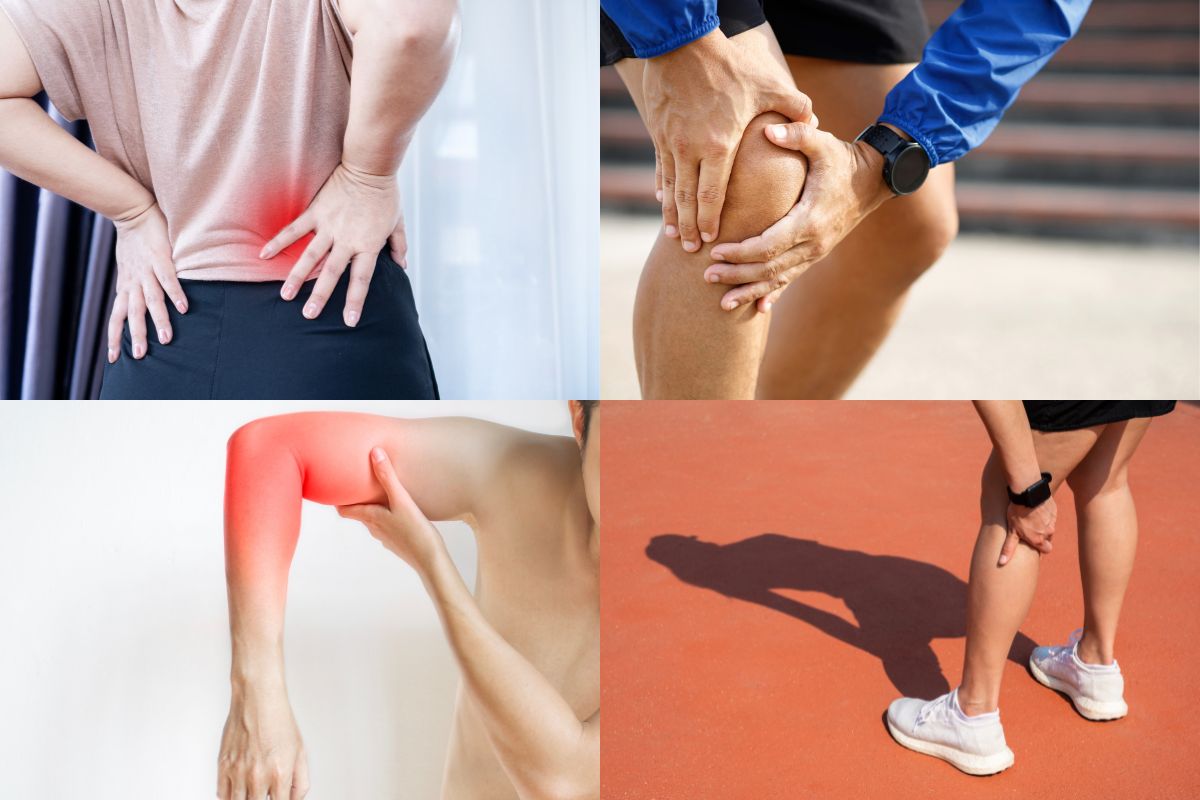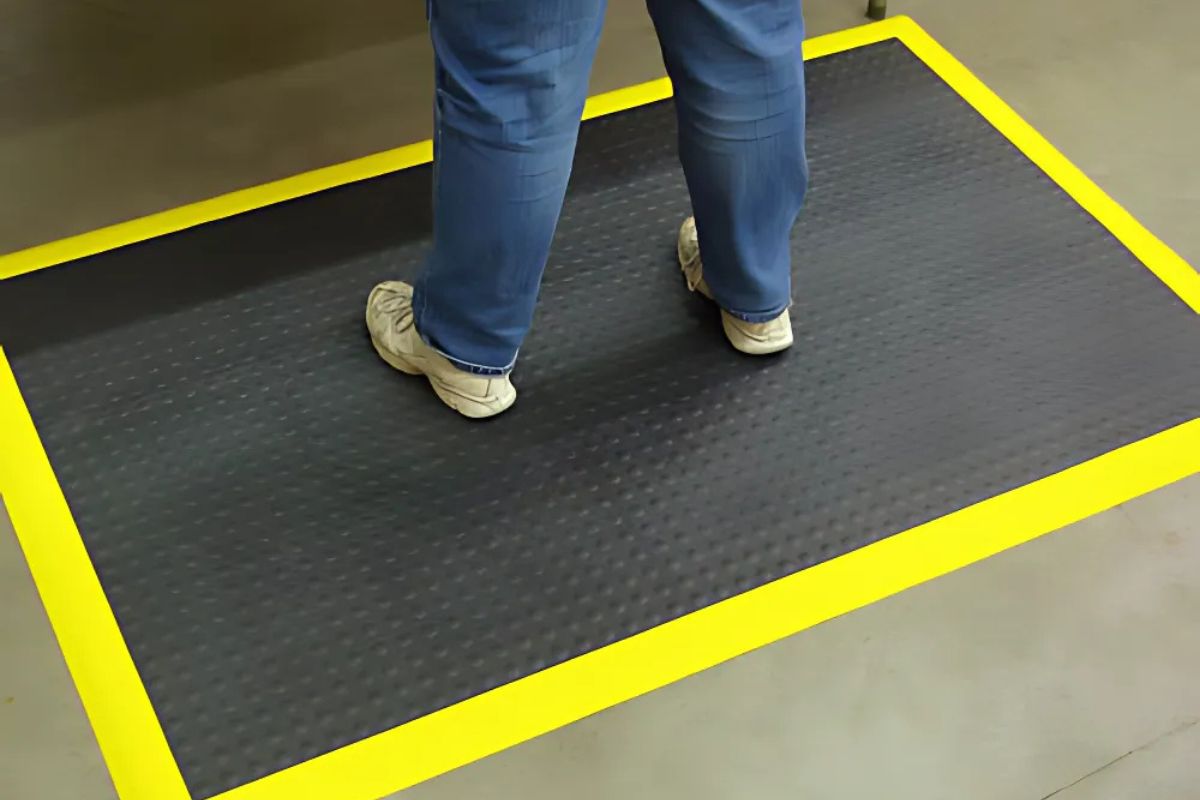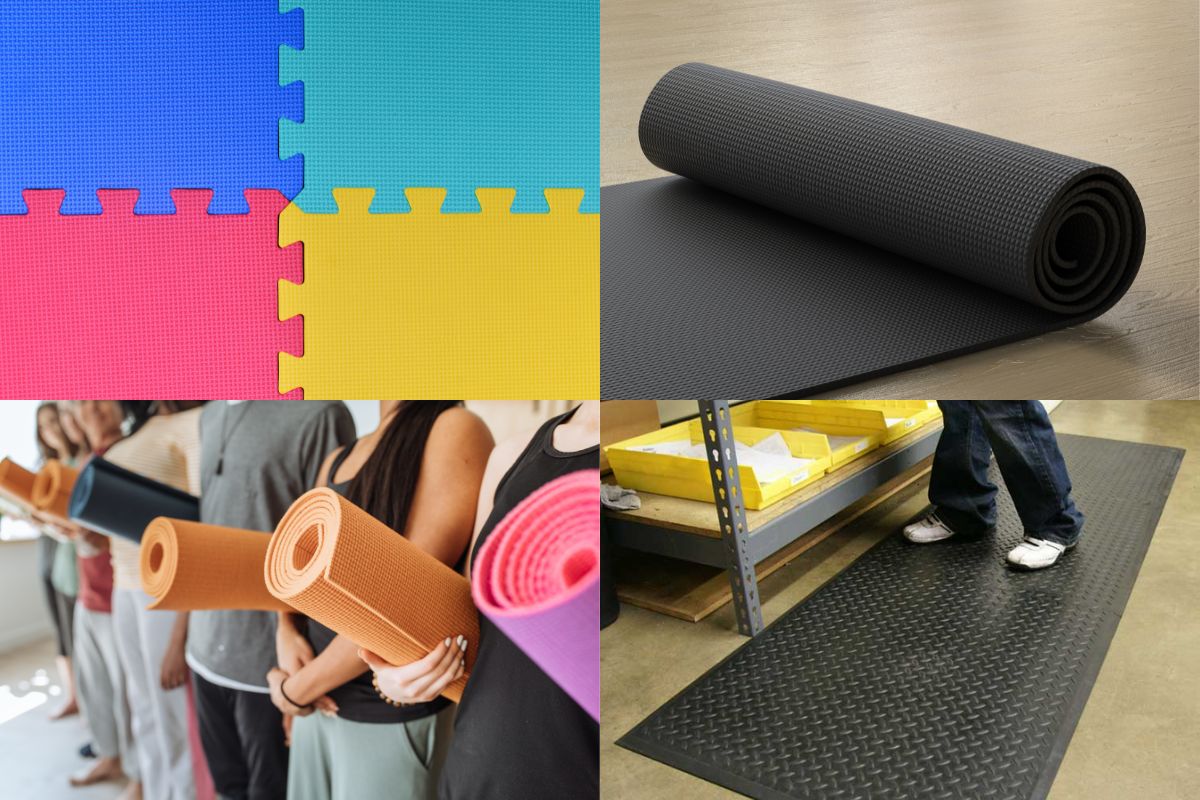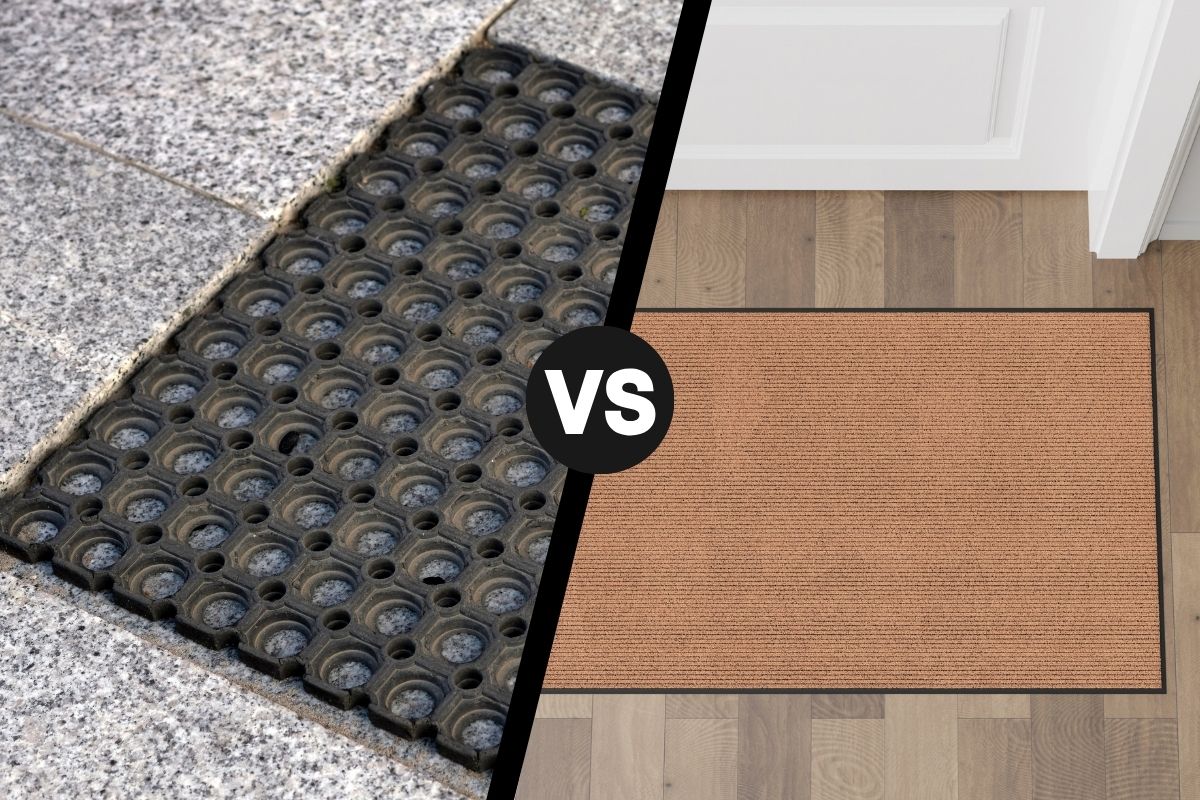What Does an Anti-Fatigue Mat Do? A Complete Guide

Workplaces today, whether busy commercial kitchens, industrial warehouses, retail counters, or even the modern office with standing desks, require long hours on your feet. This can become harmful to your body. This is where anti-fatigue mats come into play. But what does an anti-fatigue mat do? Is it just a cushy surface, or is it something more scientific?
This guide talks about everything you need to know about anti-fatigue mats and their benefits, how they function, types, ideal applications, and things to consider when purchasing one.
The Strain of Standing

Engaging in work that requires sitting for long periods can be draining, but standing for long periods can be harmful. An unaddressed health issue can initially manifest itself as foot pain, but it can progress to much greater health risks in the future, like:
- Lower back pain
- Joint stiffness
- Swollen legs and feet
- Varicose veins
- General fatigue and muscle fatigue
Such issues are rampant within working professions that cannot break away from long hours of sedentary work, like retail store attendants, assembly line workers, chefs, bartenders, and front desk clerks. Providing more than comfort, the anti-fatigue mat is a surprisingly effective solution.
What Is an Anti-Fatigue Mat?
An anti-fatigue mat is a type of floor mat that is intended to minimise the tiredness experienced when standing for long periods on hard surfaces like concrete or tiled floors. It is constructed with foam, rubber, gel, or even vinyl.
The mats come in different sizes, shapes, and thicknesses to suit the needs of different workplaces. Instead of just being soft, these mats are designed to stimulate subtle muscle action in your legs. This micro-movement helps get blood circulating, preventing stagnation and the discomfort and health risks of long-standing.

How Does an Anti-Fatigue Mat Work?
An anti-fatigue mat is made primarily to provide comfort, elevate blood circulation and reduce foot and limb pressure. It serves several purposes, such as:
- Encourages Subtle Movements: Unlike hard floors, anti-fatigue mats have a slight give or “bounce”. Anti-fatigue mats have a slight give or “bounce.” In a standing position, you can make small movements such as pushing your toes down. This allows these little personal adjustments to balance out tension that may arise on your body while these shifts engage your calf and leg muscles to get blood flowing toward your heart.
- Distributes Pressure Evenly: With the use of anti-fatigue mats, the body weight is more evenly dispersed over the feet, lowering the pressure placed on the heels and the balls of the feet.
- Shock Absorption: The material in these mats helps to absorb shock from standing and walking. This is particularly useful in high-impact work environments, like kitchens or factories, where people move around constantly.
- Reduces Joint and Back Stress: By providing a cushioning layer, anti-fatigue mats reduce the load on joints, especially the knees, hips, and lower back. Over time, this contributes to better posture and less chronic pain.
Benefits of Using an Anti-Fatigue Mat
Using anti-fatigue mats can yield multiple benefits, particularly in settings where employees or individuals stand for long stretches. Some of the top benefits include:
- Reduced Muscle Fatigue: Employees report significantly less tiredness at the end of the day when using anti-fatigue mats.
- Improved Comfort and Morale: Comfortable workers are happier and more productive. Providing anti-fatigue mats shows concern for employee well-being.
- Enhanced Productivity: Less fatigue leads to greater focus, fewer breaks, and increased output in both manual labour and office environments.
- Lower Risk of Long-Term Injuries: Prolonged standing is linked to musculoskeletal disorders MSDSS). Anti-fatigue mats can reduce this risk considerably.
- Better Posture: The mat encourages a more natural standing position, reducing slouching and poor posture habits.
- Fewer Absentee Days: Healthier employees mean fewer sick days caused by chronic pain or fatigue-related conditions.
Types of Anti-Fatigue Mats
There is no one-size-fits-all when it comes to anti-fatigue mats. The ideal choice depends on your specific needs, work environment, and foot traffic. Here are the most common types:

- Foam Mats: Soft and lightweight, foam mats are best for low-traffic areas like home kitchens or personal standing desks.
- Rubber Mats: More durable and suitable for industrial environments, rubber mats are resistant to oils, chemicals, and heat.
- Gel Mats: Gel-filled mats offer excellent comfort and cushioning and are commonly used in healthcare or office settings.
- Vinyl Mats: Often layered over foam or rubber, vinyl mats are durable and easy to clean—great for commercial settings.
- Modular Mats: These come in interlocking pieces, ideal for covering large areas or irregular-shaped workstations.
Where Are Anti-Fatigue Mats Commonly Used?
Anti-fatigue mats are used in a variety of environments, including:
- Offices with Standing Desks: Professionals using height-adjustable desks benefit greatly from alternating between sitting and standing with the help of a mat.
- Commercial Kitchens: Chefs and kitchen staff spend hours on their feet, making mats essential for comfort and productivity.
- Retail and Service Counters: Cashiers and attendants benefit from reduced strain during long shifts.
- Factories and Workshops: Industrial workers who stand on concrete floors all day need robust, shock-absorbing mats to protect their joints and circulation.
- Healthcare Settings: Nurses and medical technicians in hospitals and clinics stand for long periods, often in high-stress environments.
What to Look for When Buying an Anti-Fatigue Mat
Before purchasing an anti-fatigue mat, take into account the following considerations:
- Material: Select depending on your requirements: foam for comfort, rubber for longevity, or gel, which offers the most cushioning.
- Size: Ensure the mat encompasses the entire area within the workstation that you will be standing on.
- Thickness: 3/8 to 3/4 inches is standard. Remember that thicker isn’t always better again; it needs to be stable.
- Slip Resistance: Look for those with no-slip surfaces and slanted ends to stop trip hazards.
- Easy to Clean: Essential in the food preparation and health care industries.
- Warranty & Durability: Think about the frequency of use for the mat and if it comes with a warranty from the manufacturer.
Anti-Fatigue Mats vs. Regular Mats

It’s important to note that anti-fatigue mats are distinct from ordinary comfort mats or decorative rugs. Regular mats may look nice or add basic padding, but they do not offer the same ergonomic or circulatory benefits. Anti-fatigue mats are engineered specifically to address the health risks of prolonged standing.
Final Words: Should You Use One?
The question is, what does an anti-fatigue mat do? For one, it does a lot more than expected: it increases comfort, posture and fatigue while preventing chronic health issues related to standing for long durations. If you are setting up a corporate office, industrial site, commercial kitchen or even a home office, adding anti-fatigue mats promotes wellness and efficiency. For any of you or your employees who spend more than 2 hours a day standing up, having an anti-fatigue mat is a necessity rather than a luxury.






